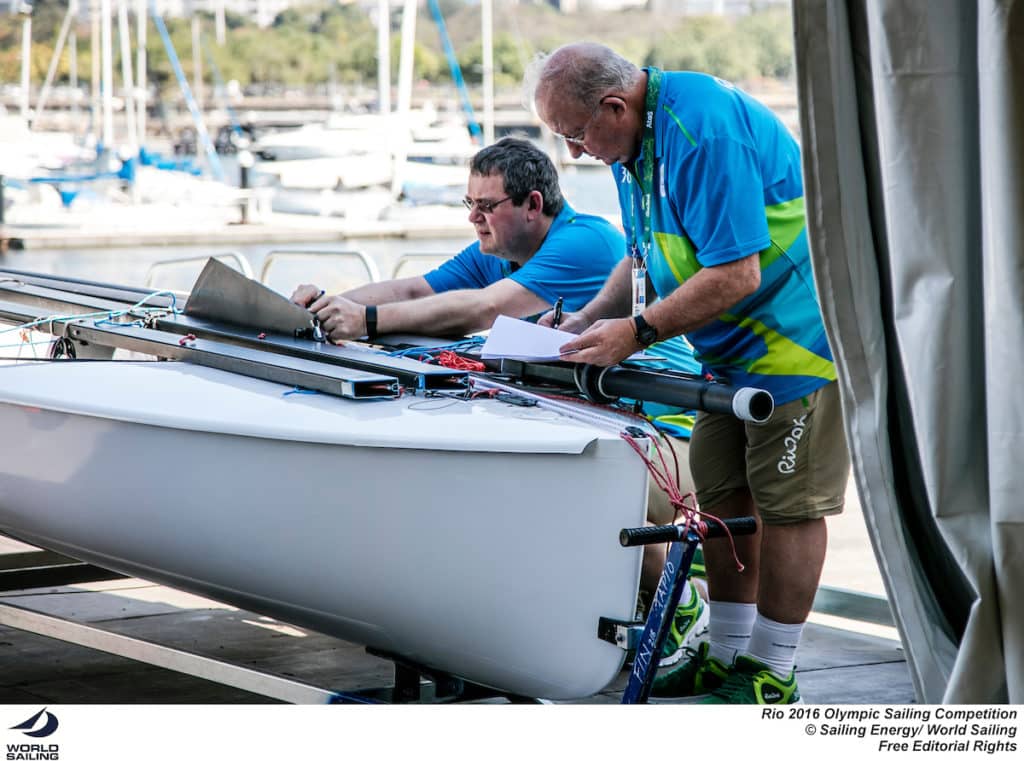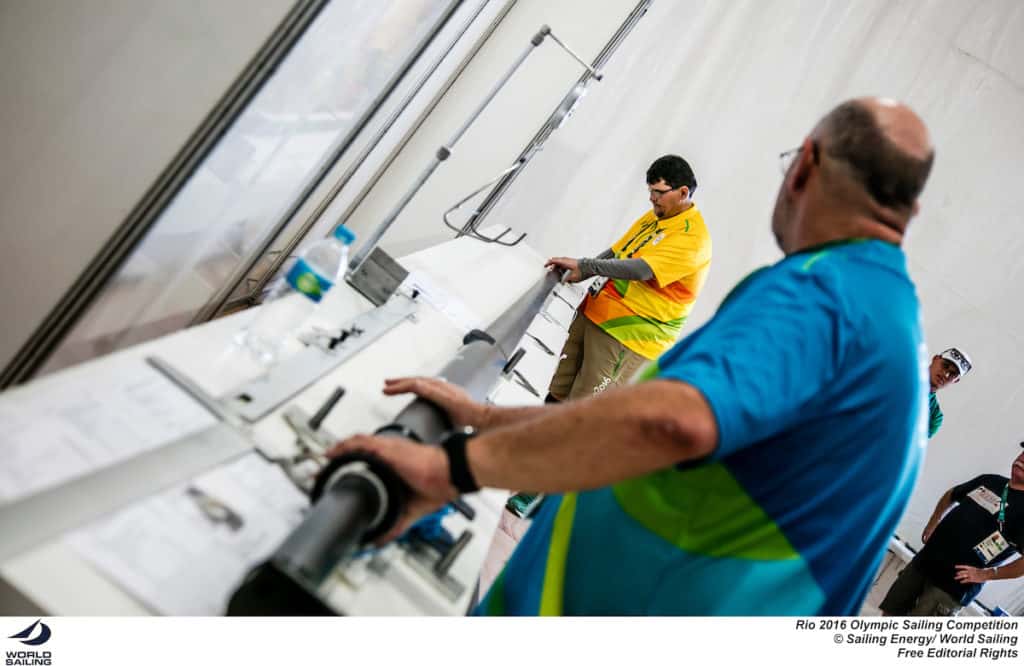
The Rio 2016 Olympic Sailing Competition
There are 380 athletes scheduled to compete in the Olympic sailing regatta. That’s 274 boats all together, so World Sailing’s Director of Technical and Offshore, Jason Smithwick and his team have their work cut out for them. They have to measure each boat that will compete in the Olympics and give it their literal stamp of approval before it goes out on the racecourse.
“They have to comply with their own class rules, they have to comply with World Sailing Regulations, and then finally the IOC has its own rules regarding things like advertising,” says Smithwick.
According to Smithwick, there are three unofficial tiers of difficulty when it comes to boat measurement. The simplest process is for the Laser, Laser Radial and RS:X sailors, who are provided equipment for the regatta. “We’ve done a lot of the groundwork before the event for these classes,” he says. “We’ve been to the factories, we’ve already weighed all the boats and checked them. All we’re looking for is alterations.”
The provided equipment gives a larger breadth of nations the opportunity to compete at the same level. “We identify those classes as what we call participation classes, with a really good spread of countries,” says Smithwick. “We want to take the equipment out of the equation so that smaller nations that don’t have as much development resources have an opportunity.”
For the Nacra 17, the Skiffs and the 470s, the process is more involved. “The one-design classes are strictly controlled boats and you can’t do much to change them besides tailoring them to your own sailing needs,” says Smithwick. “We weigh the boats on a large scale, we measure the boom and other equipment on the boat and make sure they still comply with the manufacturing specifications.”
The 470, while they have class specifications, can vary by builder. “We have to check for things like the mast’s center of gravity on the boat and the hull weight,” says Smithwick.

The Rio 2016 Olympic Sailing Competition
The most complicated process comes when it’s time for the officials to measure the Finns. “In addition to measuring the boat, we do a swing test to measure the inertia of the boat as it will move through the waves,” says Smithwick. “We have an hour to check each Finn, where with a Laser we only allot 15 minutes.”
If a boat doesn’t comply, depending on the issue the sailors will have an opportunity to correct it. If it’s a weight problem, correcting weights are added to equalize the fleet. “We give the opportunity to every sailor to come in and equalize,” says Smithwick. “However, there may be instances where there are obvious signs of cheating — hidden weight is a great example — then we protest that boat and the jury handles the penalty.” There is a heavy burden of proof to prove an intention to cheat, he says, so there are a handful of systems in place to make sure that penalties are levied fairly while still allowing racing to go on.
Smithwick’s team is more than 40 judges, and their job doesn’t end when the final boat is released from inspection. Throughout the regatta, they’ll perform random equipment checks across the racecourses and after racing each day to continue to maintain compliance and check safety equipment. “We give them numbers — like third, fifth, and seventh — and they check whoever finishes in those places that day. Sometimes it’s quite a task to catch up with a Nacra when they’ve just crossed the finish line.”
The night before the medal races for each class, the boats are put into quarantine and checked one final time before the big race. “We check all the boats in the morning, with the idea of avoiding any possible equipment protests so that the end result of the medal race is the real result,” says Smithwick.
The World Sailing measurement team started their work on Saturday and will continue to measure by class into the middle of this week, in the order in which they are scheduled to commence the competition. The systems in place will ensure the best sailors will win by their own merits, adhering to the Olympic spirit of fair play.









